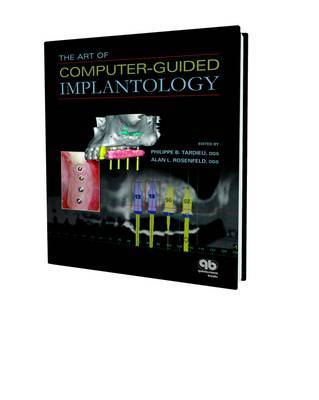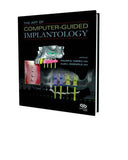The Art of Computer-Guided Implantology
The Art of Computer-Guided Implantology
1st edition 2009
Buch
Hardcover, 240 Seiten, 409 Abbildungen (farbig)
Sprache: Englisch
Fachgebiete: Implantologie, Oralchirurgie, Ästhetische Zahnheilkunde
Best.-Nr.: 17641
ISBN 978-0-86715-477-1
Quintessence Publishing, USA
Price: 148 €
This book is the first to introduce a radiographic paradigm shift in implant therapy that provides an accurate method for transferring the patient's prosthetic needs into a resin-based surgical template designed to guide implant placement.
Computed tomography (CT) was introduced to the dental profession in 1987 to facilitate radiographic examination of the jaws and implant treatment planning. It allowed the dental profession for the first time to evaluate anatomic structures and the effects of postextraction resorptive patterns with submillimeter accuracy.
Because there was no mechanism for introducing prosthetic information into the CT dataset, however, the value of this technology was limited to diagnostic applications. In 1999, real-time 2D-3D interactive imaging software was developed, allowing the prosthetic outcome to be transferred to the CT dataset with the use of an appropriate scanning appliance. This technologic breakthrough facilitates a direct link between anatomic interpretation, treatment planning, and precise surgical execution. Through computer-guided implantology, preoperative rather than intraoperative planning drives treatment decisions.
This book has been organized to allow the clinician an opportunity both to survey the field as a broad overview and to implement the critical-thinking skills necessary to navigate the complexities of patient treatment. While the technology in this field will undoubtedly continue to advance, the fundamental principles presented in these 11 chapters will remain the cornerstone of patient care.
All of the contributors share a common belief that technology is not a substitute for clinical experience and wise judgment and that the implementation of computer-guided implantology should be predicated on the unique experiences of each clinician and not what is therapeutically fashionable at the moment.
| Naslov | The Art of Computer-Guided Implantology |
| Autor | Philippe B. Tardieu, Alan L. Rosenfeld |
| Vrsta | Implants |
| Datum objave | Aug 31, 2017 |
The Art of Computer-Guided Implantology
1st edition 2009
Buch
Hardcover, 240 Seiten, 409 Abbildungen (farbig)
Sprache: Englisch
Fachgebiete: Implantologie, Oralchirurgie, Ästhetische Zahnheilkunde
Best.-Nr.: 17641
ISBN 978-0-86715-477-1
Quintessence Publishing, USA
Price: 148 €
This book is the first to introduce a radiographic paradigm shift in implant therapy that provides an accurate method for transferring the patient's prosthetic needs into a resin-based surgical template designed to guide implant placement.
Computed tomography (CT) was introduced to the dental profession in 1987 to facilitate radiographic examination of the jaws and implant treatment planning. It allowed the dental profession for the first time to evaluate anatomic structures and the effects of postextraction resorptive patterns with submillimeter accuracy.
Because there was no mechanism for introducing prosthetic information into the CT dataset, however, the value of this technology was limited to diagnostic applications. In 1999, real-time 2D-3D interactive imaging software was developed, allowing the prosthetic outcome to be transferred to the CT dataset with the use of an appropriate scanning appliance. This technologic breakthrough facilitates a direct link between anatomic interpretation, treatment planning, and precise surgical execution. Through computer-guided implantology, preoperative rather than intraoperative planning drives treatment decisions.
This book has been organized to allow the clinician an opportunity both to survey the field as a broad overview and to implement the critical-thinking skills necessary to navigate the complexities of patient treatment. While the technology in this field will undoubtedly continue to advance, the fundamental principles presented in these 11 chapters will remain the cornerstone of patient care.
All of the contributors share a common belief that technology is not a substitute for clinical experience and wise judgment and that the implementation of computer-guided implantology should be predicated on the unique experiences of each clinician and not what is therapeutically fashionable at the moment.


